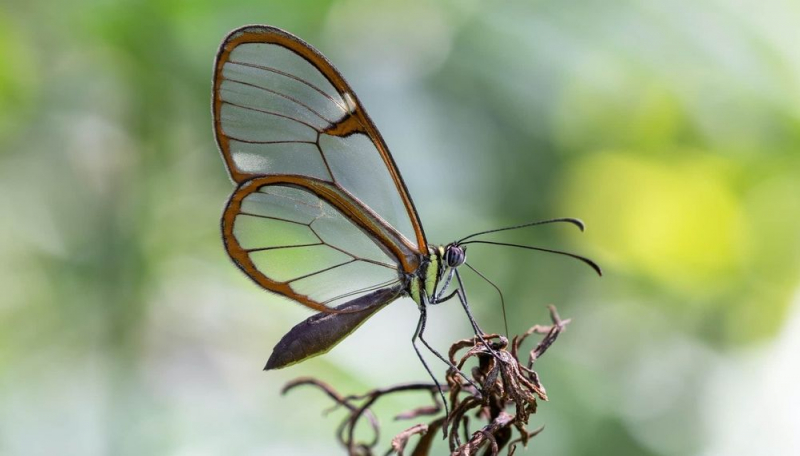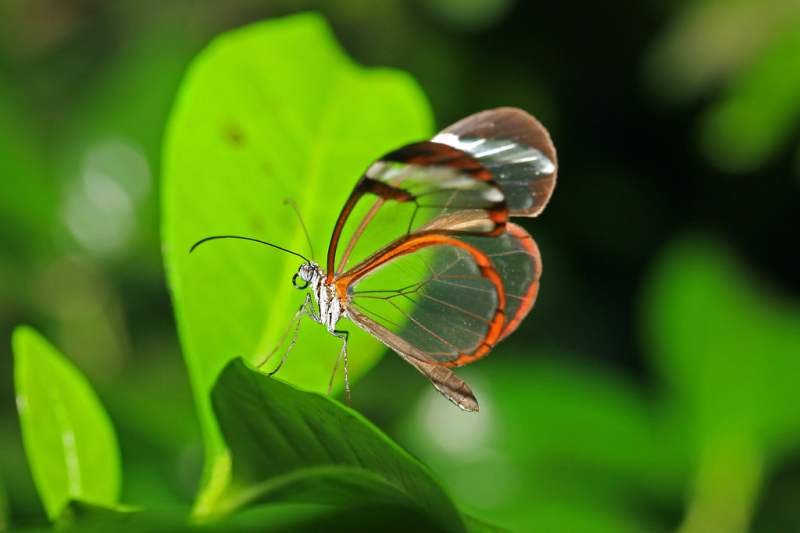Glasswinged Butterfly
The Glasswinged butterfly's (Greta oto) name suggests that its wings are transparent. In Spanish-speaking regions, it may also be referred to as espejitos, meaning "little mirrors" because of its transparent wings. The butterfly is mainly found in the Central and northern regions of South America with sightings as far north as Texas and as far south as Chile. It is extremely tough for predators like birds and reptiles to capture them because of their transparent wings. In reality, the reddish-brown border around its wings makes them noticeable but difficult to see. Additionally, great oto butterflies go far, to Florida. They primarily eat lantanas, a common flower.
These butterfly species mate polygynously, with males attempting to obtain one or more female mates per breeding season. During lekking, male glasswing butterflies emit pheromones to entice females. The pyrrolizidine alkaloids obtained by the butterflies through their diet of Asteraceae plant species are what are used to make the pheromones. Additionally, it is unclear that the pheromone is employed to differentiate between species because the method by which the pheromone is produced is not only taken from butterflies and moths themselves but also from plants, as with the glasswing butterfly.












